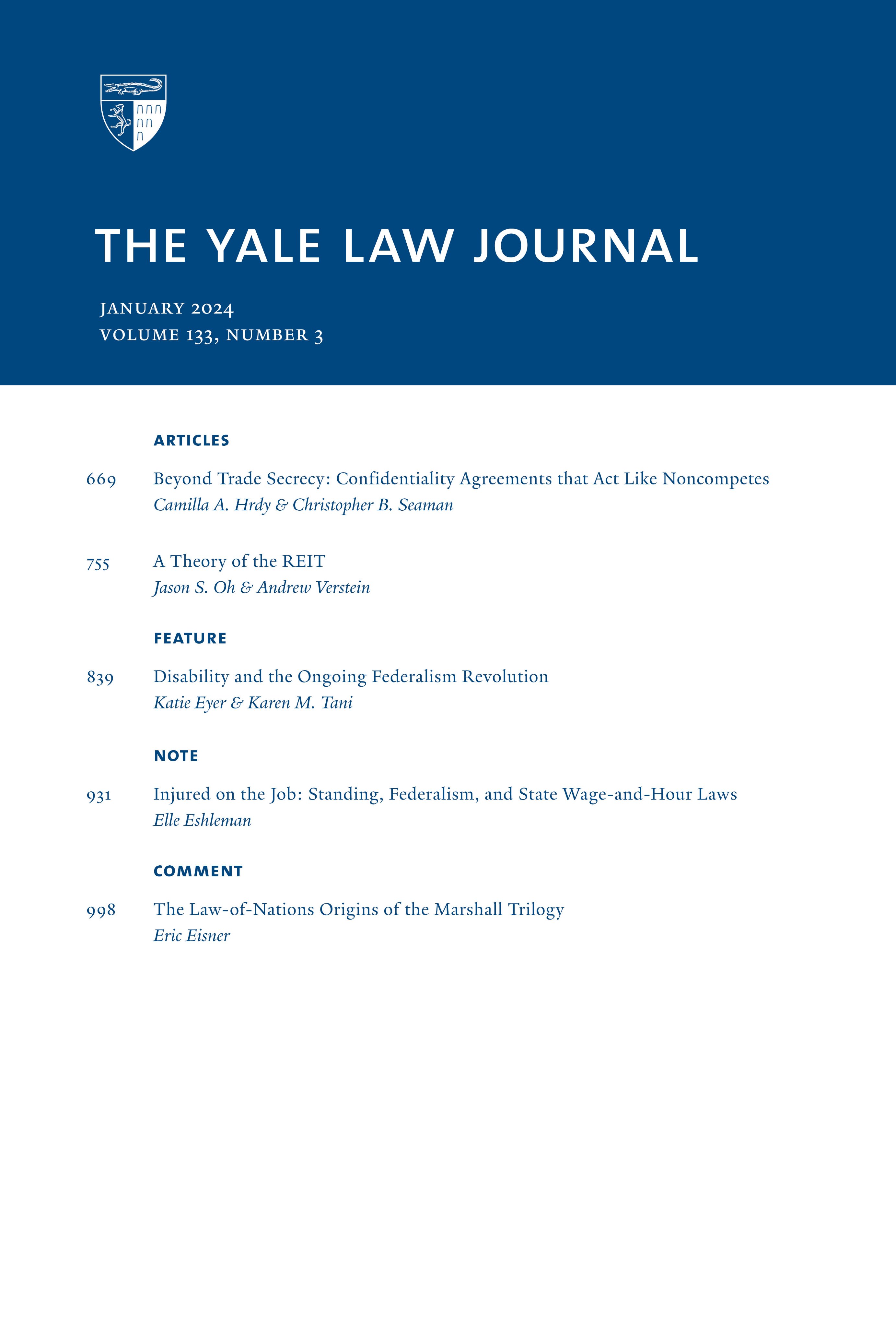新投票权法案的承诺与陷阱
IF 5.2
1区 社会学
Q1 LAW
引用次数: 20
摘要
2006年夏天,国会以参议院一致投票和众议院有限的反对意见,重新授权了即将到期的《投票权法案》(VRA)条款。外人在最终投票中看到的两党合作的表象掩盖了两党在新《投票法》核心条款含义上的严重分歧,该条款禁止选举法“削弱”少数族裔公民“选出他们喜欢的候选人”的能力。这些分歧在国会通过法案后才公布的参议院委员会报告中浮出水面。本文描述了该法前所未有的立法历史,以及导致该法采取这种形式的政治和宪法限制。它还提出了对新的倒退标准的解释,避免了替代方案的党派偏见,同时强调了种族两极化投票对这项新法律的合宪性和意义的重要性。它敦促将新法律解读为防止重新划分选区的计划,因为重新划分选区的计划降低了少数族裔社区喜欢而白人不喜欢的候选人在各选区当选的总体概率。本文章由计算机程序翻译,如有差异,请以英文原文为准。
The Promise and Pitfalls of the New Voting Rights Act
In the summer of 2006, Congress reauthorized the expiring provisions of the Voting Rights Act (VRA) with a unanimous vote in the Senate and with limited opposition in the House of Representatives. The veneer of bipartisanship that outsiders perceived in the final vote glossed over serious disagreements between the parties over the meaning of the central provision of the new VRA, which prohibits voting laws that "diminish the ability" of minority citizens "to elect their preferred candidates of choice." Those disagreements came to the surface in a fractured Senate Committee Report released only after Congress had passed the law. This Article describes the unprecedented legislative history of this law, and the political and constitutional constraints that led the law to take the form that it did. It also presents an interpretation of the new retrogression standard that avoids the partisan bias of alternatives while emphasizing the importance of racially polarized voting to the constitutionality and meaning of this new law. It urges that the new law be read as preventing redistricting plans that reduce the aggregated probability across districts of the election of candidates preferred by the minority community and disfavored by whites.
求助全文
通过发布文献求助,成功后即可免费获取论文全文。
去求助
来源期刊

Yale Law Journal
LAW-
CiteScore
4.50
自引率
6.20%
发文量
0
期刊介绍:
The Yale Law Journal Online is the online companion to The Yale Law Journal. It replaces The Pocket Part, which was the first such companion to be published by a leading law review. YLJ Online will continue The Pocket Part"s mission of augmenting the scholarship printed in The Yale Law Journal by providing original Essays, legal commentaries, responses to articles printed in the Journal, podcast and iTunes University recordings of various pieces, and other works by both established and emerging academics and practitioners.
 求助内容:
求助内容: 应助结果提醒方式:
应助结果提醒方式:


